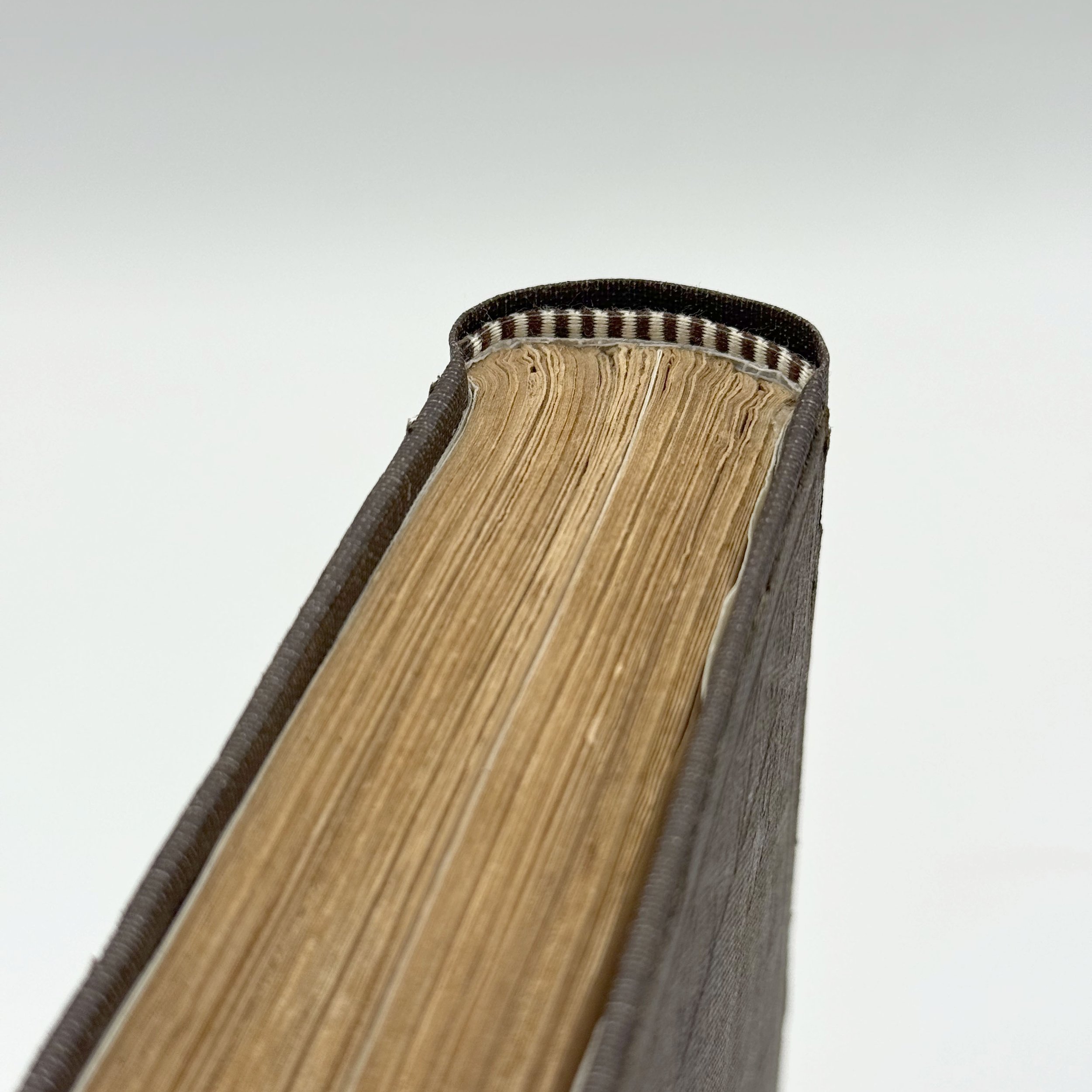Restoration Spotlight:
Uncle Tom’s Cabin, Volumes I & II
Volume I before restoration — detached boards and broken spine.
Every book tells a story, not just in its pages, but in its wear, its repairs, and its return to life. This two-volume set of Uncle Tom’s Cabin came to the bench in rough shape: Volume I had detached boards and the cloth spine detached. Volume I was missing a few pages, and both volumes bore the unmistakable imprint of time. Thankfully, the image plates were all accounted for. Here's how we brought them back.
🪡Resewing and Repair
Volume I: Rebuilding from the Spine Out
The first volume needed a full resewing — its original book cloth spine was entirely detached, and several pages were missing. After sourcing and printing accurate replacements, I integrated the new leaves into the existing signatures and resewed the entire textblock. To reinforce the spine, I added a mesh liner (known as mull or super) for structure and flexibility, then attached fresh endpapers.
Volume one after resewing
Volume II: A Mirror Process
Volume II followed much the same path: replacement endpapers, resewing, spine reinforcement. I also added hand-stitched headbands to both volumes, a small detail that adds both durability and a touch of craftsmanship.
Binding and Finishing Touches
The original bookcloth was too far gone to be reused as-is — but not lost. I carefully removed the gilt-stamped front and the embossed back cloth panels, saving them to preserve the character of the original binding.
With the textblocks prepped, I recased both volumes using new bookcloth matched for tone and texture. After pressing the books for a clean, even set, I reattached the preserved gilt and embossed panels to the new covers. The result: a blend of past and present that honors the book’s original form.
A short video showing key moments of the restoration process.
🎥 Watch the Process
Closing Note
This restoration offered an opportunity to engage with a foundational and deeply complex work of American literature. Uncle Tom’s Cabin occupies a pivotal place in the history of anti-slavery discourse, and its preservation invites continued reflection on its cultural impact, literary legacy, and evolving interpretation over time.





